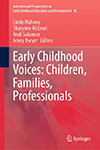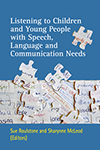Children's Voices Centre
The Children’s Voices Centre is a transformative place that champions children’s communication rights. We learn from children about issues that matter. We aim to promote social justice and equity, and influence policy and practice. We emphasise inclusivity, diversity, learning, and innovation.
Research is grounded in the ‘hundred languages of children’ philosophy, recognising the myriad of ways children express themselves and interact with their world. Solutions are generated by children during creative educational and research opportunities. We prioritise children and families experiencing participation barriers (including children with disabilities and those with diverse geographical, linguistic, cultural, economic, and educational backgrounds).
Communication is a human right for all. Aligning with the United Nations’ Convention on the Rights of the Child we attend to the “voice” of children. We creatively engage in child-friendly arts-based methods to provide children with the “right to freedom of expression… regardless of frontiers” as outlined in Article 13.

Early childhood voices: Children, families, professionals
Mahony, L., McLeod, S., Salamon, A., & Dwyer, J. (Eds.)
(2024)
Early childhood voices: Children, families, professionals.
Springer International Publishing.

Listening to children and young people with speech, language and communication needs
Roulstone, McLeod, S. (Eds.)
Listening to children and young people with speech, language and communication needs.
J&R Press.
978-1-907826-08-5
Children from across the world were invited to ‘draw or create a picture of yourself playing’, then answer a few quick questions to describe their creation.
More than 200 drawings, creations and photos from children across the world show us:
The Children Draw Playing Global Online Gallery was created for the Early Childhood Voices 2024 Conference.
Children from across the world were invited to 'draw a picture of you talking to someone', then answer a few quick questions to describe their drawing.
The drawings and answers from 200 children from 24 countries show us:
We love learning from children. Here are some of the ways we have listened to children
We are building evidence on the experiences and perspectives of children and young people with disabilities on health and access to healthcare services.
Contact Distinguished Professor Sharynne McLeod (smcleod@csu.edu.au) to collaborate with us
Sharynne McLeod and Holly McAlister are the guest editors of a special issue of Child Language Teaching and Therapy titled “Listening to children with diverse communication abilities” to be published in 2026.
The Child Language Teaching and Therapy 2024 Summer Lecture entitled 'Do we really listen to children?' by Distinguished Professor Sharynne McLeod is available on YouTube
Contact Distinguished Professor Sharynne McLeod (smcleod@csu.edu.au) and Holly McAlister (hmcalister@csu.edu.au)